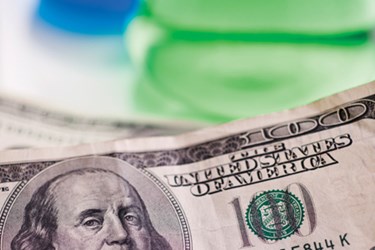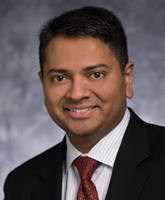Biosimilars Part 2: It's All About Dollars Now
By Louis Garguilo, Chief Editor, Outsourced Pharma

Time to table the discussion on the science of replicating biologics. It’s all about dollars now.
Biosimilars have been on markets outside of the U.S. for nearly a decade. Last year, U.S. FDA accepted its first application as “accepted to file” under the 351(k) approval pathway created by the Biologics Price Competition and Innovation Act (BPCIA) of 2009. Market approvals are coming. Seven of the top 10 biggest-selling drugs in the U.S. are biologics.
With a healthcare system suffocating under the weight of payments and reimbursements, taxes, pricing and budgetary pressures, biosimilars are a part of future economics and finances.
Big Pharma says it’ll lose money; biosimilars producers devise strategies to make more; consumers might see some stay in their pockets; healthcare systems and administrators plan to use them differently (because they’ll never really save them); and Obamacare bureaucrats see them as paving the path to nationalized medicine.
Regarding the last part of the above sentence, Express Scripts projects that the United States would save $250 billion between 2014 and 2024 if just the 11 likeliest biosimilars entered the market.
More broadly, estimates vary from a few billion to $20 billion in global biosimilars sales by the end of this decade. Wherever the real number falls, it comes from a starting point of near zero just a dozen or so years ago.
In the first of our two-part look at biosimilars, we gave Sumant Ramachandra’s cycle of Innovation, Affordability and Sustainability a spin to demonstrate the essential role of biosimilars within today’s healthcare system. Here we’ll focus more on the business side. And, as we’ve come to know him, Sumant has some interesting principles.
Becoming Biosimilars
Sumant Ramachandra is senior vice president and chief scientific officer at Hospira, Inc. Among other things, his U.S.-based company has become a global biosimilars pioneer with the muscle to develop, obtain regulatory approvals, commercially manufacture, effectively brand and actively market drugs into global healthcare systems.
Hospira was born from the spin-off of Abbott Laboratories’ hospital products business in 2004. Life started with a single innovative drug on the U.S. market, Precedex (dexmedetomidine), a revenue stream from some generic injectable drugs and infusion devices, and a handful of generics in the pipeline.
What happened next is harder to explain. A decision was made to blend the business model for its generics products and its sole proprietary product to an as-of-that-time nonexistent product market, biosimilars. “Those were the very early days,” says Sumant, who joined the company in 2008. “There were no regulations and no developed markets. Management just had this early foresight that biosimilars would be a natural business extension to go after.”
Hospira started building out capabilities and leveraging its core knowledge for sterile manufacturing and the marketing and sales of Precedex. “We literally created ourselves by taking advantage of and growing the adjacencies we started in,” says Sumant.
Today, Hospira bills itself as “the world's leading provider of injectable drugs and infusion technologies, and a global leader in biosimilars.” In the U.S. it markets over 140 distinct molecules, including antibiotics, cardiac medication and oncolytics. The number reaches 200 molecules globally. According to Sumant, important from a strategic sense is that all Hospira businesses and “adjacencies”—medical device, pharmaceuticals, generics and biosimilars, and its CDMO business—are “about making drugs and all the components to support the administration of injectables for patients.”
On the pharma side, the biggest revenue contributor is the injectable generics business, which falls under specialty injectable pharmaceuticals (SIP). Biosimilars have become a main part of the total story, if not quite yet in the U.S. “We’ve built this out all these years and it is coming to fruition,” says Sumant.
Entering the biosimilars arena is bearing fruit for others as well. While Sumant says that taken as a whole there is no single company that competes with Hospira, there is an impressive list of biosimilars competitors. Many of them, like Hospira, list biosimilars as one among revenue generating businesses. These include Sandoz (Germany), Teva (Israel), Dr. Reddy’s Laboratories (India), Biocon Ltd. (India), Mylan (U.S.), Biopartners (Switzerland), Amgen (U.S.). Sandoz leads the pack with an estimated 50% of the global biosimilars market. (Hospira is second.)
Modeling Market Success
The economics of biosimilars differ from generics in that the cost differential from the reference product may not be as wide in the former as the latter. While generics has become a much more competitive and cost-sensitive market over time, biosimilars, because of the costs of development to the complexity of manufacturing and other factors, starts from a market requiring larger investments to get in and stay in.
According to Sumant, the bulk of Hospira’s small-molecule generics development is formulation and analytical sciences based on a reference product. Markets can differ, so the drug itself needs to be adapted to country-specific regulatory requirements. In cases such as for beta-lactam antibiotics (β-Lactam antibiotics) or oncolytics requiring highly specialized technology, Hospira may acquire assets for API development to create a specialized vertical integration with dedicated facilities for better supply chain management, and cost-control.
Biosimilars, on the other hand, have a heavy focus on the drug substance (or biologics API) as well as on the fill-and-finish of the drug product. Hospira has built all of its capabilities from an R&D perspective in-house and also invested in microbial (bacterial) technology for manufacturing biosimilars.
The pipeline was built in two ways. One is internal development, from making the construct or vector, to the cell line (mammalian or microbial), through CMC, clinical development and regulatory strategies. “We may manufacture in-house like for filgrastim, or procure the API from a second-party [Hospira’s drug substance partner for EPO is GSK/Glaxo] and complete the fill-and-finish in-house. The key question is, ‘How do we best leverage our assets to maximum capacity and find the right timing for investments in new internal capabilities?’”
The second model is partnering. Its South Korean partner, Celltrion, developed Inflectra (reference product, J&J’s REMICADE®), which became Europe's and Canada’s first approved biosimilar of a monoclonal antibody (mAb). The two companies have a joint steering committee and work collaboratively. Celltrion submitted Inflectra to the U.S. FDA via the 351k application mentioned above, with Hospira being the exclusive marketing partner.
“In the near future we’ll have an advisory committee like Sandoz had for Filgrastim,” Sumant says, regarding that submission and referring to Sandoz’s (a Novartis group company) first FDA-accepted application.
Bookends
Sumant wants to talk about “bookends.”
Hospira launched Retacrit (Epoetin) in early 2008 and Nivestim (Filgrastim) in mid-2010. Epoetin is a complex biosimilar; Filgrastim less so. Epoetin can tend to be a longer course in certain patients. The originator in Europe, J&J, experienced safety issues with pure red cell aplasia (PRCA), and there were some general concerns with the immunogenicity of epoetin drugs. “This is the first bookend,” explains Sumant, “where the adoption curve is slower for certain reasons, but opens the market to competition and provides patients early alternatives.”
The market uptake for Hospira's and other filgrastim biosimilars has been more rapid. Some reasons are a shorter course of therapy, higher patient turnover and a cleaner safety profile. Add that in general, over time there is growing acceptance of biosimilars. In Sumant’s parlance, “the market is better primed for biosimilars and competition.”
These two adoption curves and market dynamics became “the bookends that define the art of the possible from a business perspective.” According to Sumant, the key question is: “Where can other biosimilars fall between these two, or how can we extend the bookend at the higher-end of adoption?’”
Dollars and Sense
Retacrit and Nivestim contribute annual revenues of over $100 million to Hospira. “That may not sound like a lot initially,” says Sumant, “but consider all the resistors that were in place when biosimilars came to the market.” Hospira’s third product, Inflectra, is a biosimilar version of REMICADE® (Infliximab) developed by partner Celltrion. REMICADE® is a multi-billion dollar drug and one of the largest pharmaceutical products in the world. With this, Hospira and Celltrion were the first to introduce a biosimilar monoclonal antibody to the highly developed regulatory markets.
“For a long time people said, ‘biosimilars can’t be done.’ Then when biosimilars were done, they said, ‘Well, complex biosimilars like a monoclonal antibody can’t be done.’ That has been accomplished as well,” says Sumant.
In other words, the science works. The money does, too, perhaps for all healthcare parties. Sumant believes biosimilars serve patients and collectively the industry is ushering in a new era of access and affordability. “The dollars will follow,” he says.
I ask Sumant if he sees a future where a Pfizer comes to Hospira to work together on a biosimilar of its original drug. “We believe in the partnership model, and others are starting to embrace it,” he says. “We’re one of the first to do a partnership with the initial in-licensing of Retacrit® from Stada (Germany). If it matches internal capabilities and makes financial sense, we’ll take it on.”
No doubt making financial sense for such a business model for biosimilars will be a much tougher call for the innovators. But innovation calls for being open to new ideas. Without a tinge of irony, or perhaps to turn the whole debate on its head, Sumant ends our conversation by saying, “The idea of biosimilars is the farthest thing away from the not-invented-here syndrome.”
